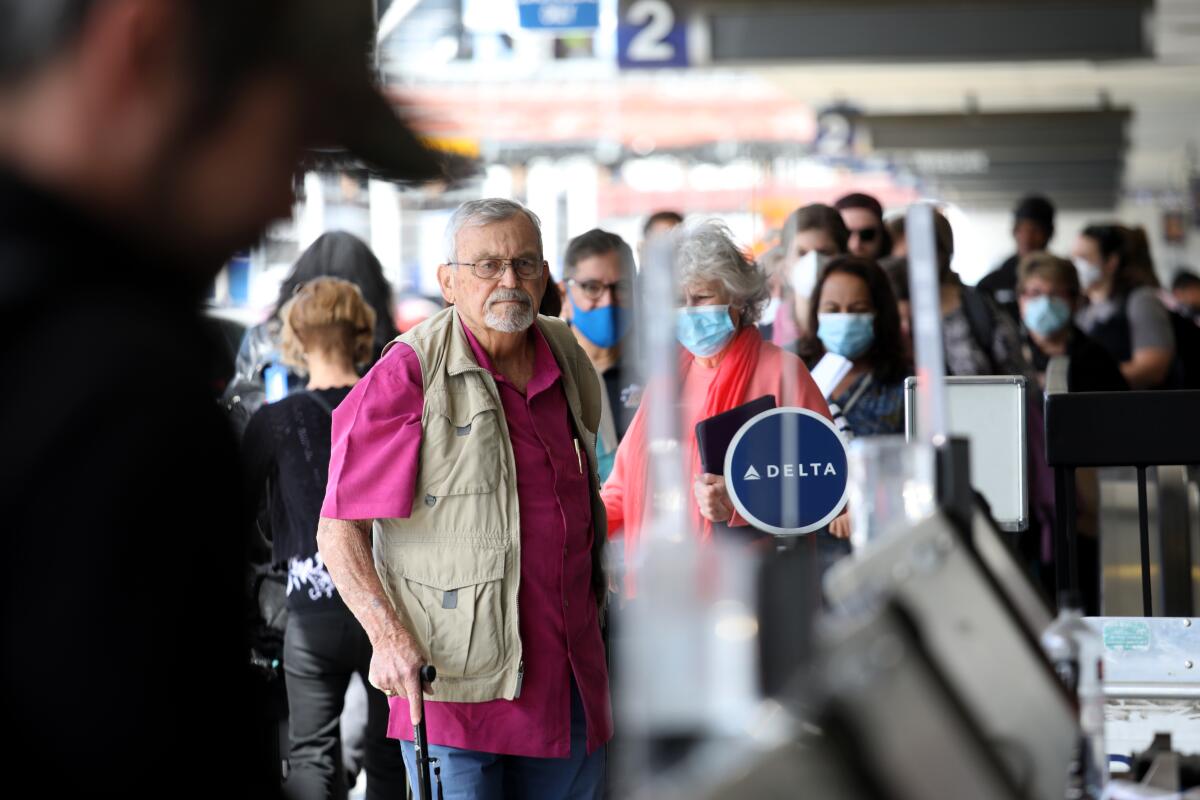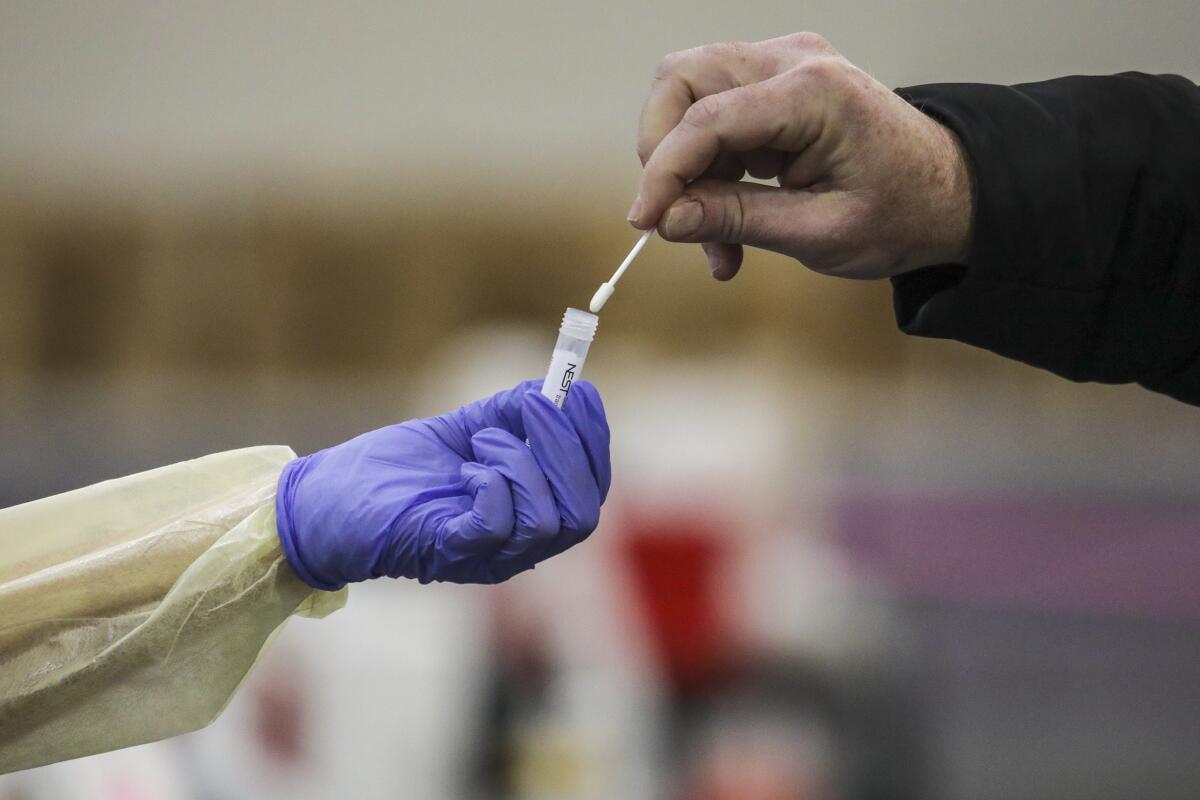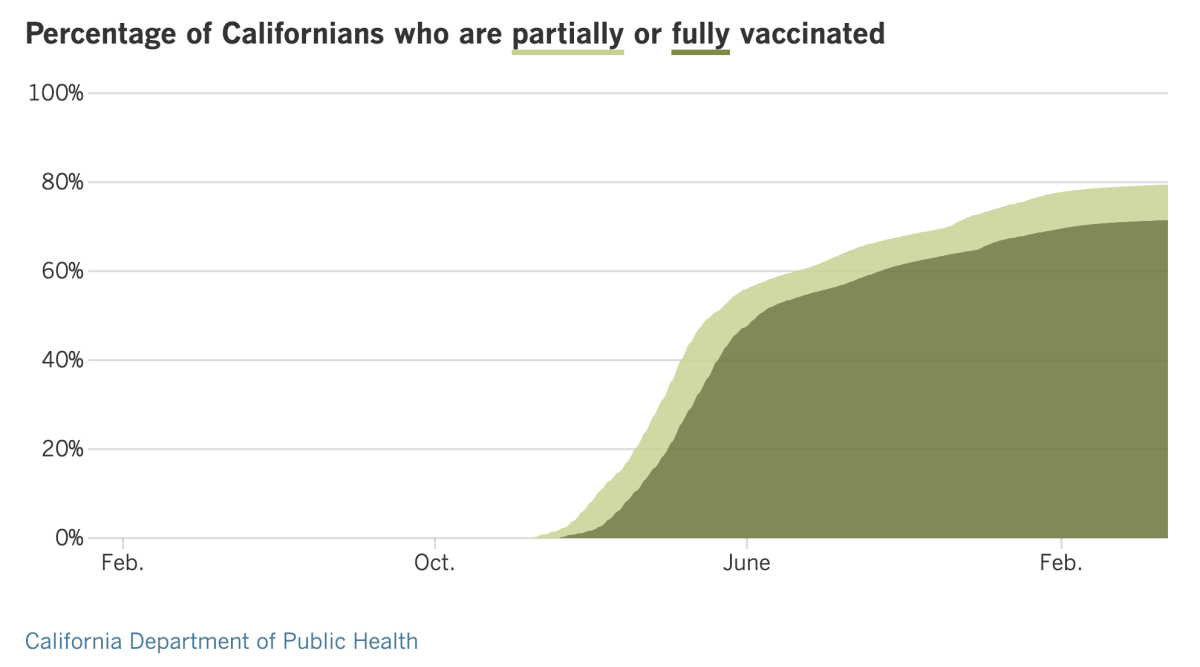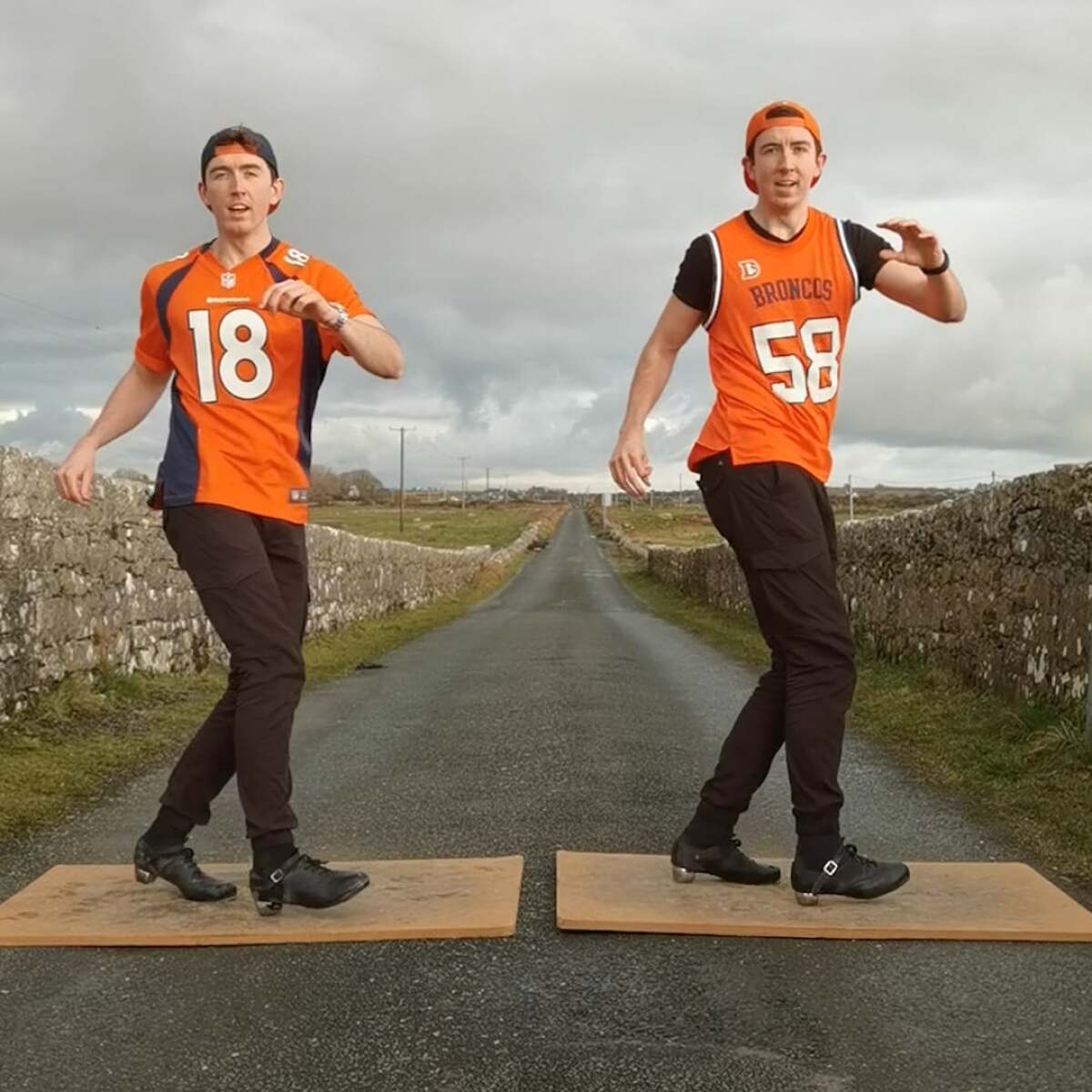Coronavirus Today: Why masks for travelers matter so much
- Share via
Good evening. I’m Karen Kaplan, and it’s Tuesday, April 26. Here’s the latest on what’s happening with the coronavirus in California and beyond.
It’s been a week since a judge in Florida became — depending on your point of view — the nation’s pandemic hero or villain by voiding the order from the Centers for Disease Control and Prevention requiring masks to be worn on public transportation.
Sure, mask mandates were falling away in many parts of daily life. Here in Los Angeles, they’re no longer required in stores, gyms, movie theaters or other buildings open to the public. Nor are they needed to attend a concert or a game at Crypto.com Arena.
Even schools have given students and teachers the option of going without face coverings inside classrooms. (Not surprisingly, the number of coronavirus outbreaks in schools started rising after masks became optional. Colleges and universities around the country have reinstated their mask mandates. So did the city of Philadelphia.)
But public transportation is a special case. Just think about the millions of passengers who fly around the country each day. They come from cities all over, mix with one another in airports, cram onto planes for hours at a time, then fan out across new cities. The same thing happens on a smaller scale with commuters who board trains and buses.
“It’s an optimal formula for spreading a virus broadly and unpredictably across geographic boundaries,” my colleague Melissa Healy writes.
Even so, the ruling by U.S. District Judge Kathryn Kimball Mizelle in Tampa, Fla., forced the Biden administration to acknowledge that — for the time being, at least — the federal government couldn’t require Americans to mask up while traveling. Airlines quickly announced that they would no longer enforce the mask rule, as did Amtrak and, a few days later, Disneyland. Politicians opposed to public health mandates gloated.
At the same time, those who are still wary of the coronavirus — especially the millions of people who are immunocompromised — are fretting about the sudden loss of protection.
Among them is Paul Cibis, a 42-year-old Los Angeles resident who takes medication to suppress his immune system so it won’t reject his transplanted kidney. Before the pandemic, Paul and his wife, Angie, were avid world travelers. Now the idea of being on a plane surrounded by unmasked passengers gives him the heebie-jeebies.
“You’re sitting there, stewing in everything that everyone else is breathing out,” he said.

Medical experts say Cibis is right to be concerned. Even if he wears a top-of-the-line N95 respirator, it won’t be as helpful as a mask on the face of a person who’s infected. And given the level of virus in the community, the odds are extremely high that an aircraft with 150 passengers will include at least one person who’s infected (though they might not realize it if they don’t have COVID-19 symptoms).
And it’s not just high-risk people who should be concerned.
Imagine that the recent Gridiron Club dinner took place on an Airbus A-380 jumbo jet. Presumably, none of the 600 or so government and media elites in attendance showed up knowing they had an active infection. And yet, at least 72 people caught the virus in the days after the April 2 event. (As columnist Michael Hiltzik points out, we don’t know how many additional infections developed among servers, dishwashers and other workers because they’re not famous enough to make headlines.) If people like Atty. Gen. Merrick Garland, California Congressman Adam B. Schiff and New York Mayor Eric Adams could catch it when they let down their guard, anyone could.
Local health officials have the option of imposing tougher mask rules on travelers, and Los Angeles County is one of the few that has. The county’s health order makes clear that travelers still have to cover their faces at Los Angeles International Airport, Hollywood Burbank Airport, Union Station and other transit hubs, as well as on trains and buses, and in taxis and ride-hailing vehicles. The mask mandate does not apply on airplanes but passengers are expected to wear their masks until they board a plane and as soon as they disembark. (Is the logic behind a federal rule becoming more clear?)
Barbara Ferrer, the county’s public health director, said she was persuaded to bring the mandate back after the CDC determined it was still “necessary” to protect the public’s health.
“As soon as CDC determined that it was important to keep this masking requirement in place,” she said, “we went ahead and aligned with the CDC.”
That determination by the CDC prompted the Justice Department to appeal the Florida judge’s ruling. From a legal standpoint, it ought to be a straightforward case. The authority to suppress interstate transmission of a deadly virus in the midst of a pandemic is one of the central powers granted to the agency under the 1944 Public Health Service Act, according to Lawrence Gostin, a public health law expert at Georgetown University.
“It’s not even a debatable case,” Gostin told Healy.
But logic hasn’t always prevailed in this pandemic, and that means the appeal carries some risk, he added.
If Mizelle’s ruling were to stand, it would be a slap in the face to the CDC, but it wouldn’t establish a new precedent that weakens the agency’s authority. However, if the appeals court considers how much better the country is doing now compared with at the height of the Omicron surge in January, it might let the ruling stand — and that would set a troubling precedent.
The people challenging the mask mandate “should be careful what they wish for,” Gostin said. The next time the country is confronted by a new and deadly disease, “they won’t want a public health agency responding to it with their hands tied behind their backs.”
In the meantime, there are steps you can take to reduce your infection risk when your fellow travelers are mask-free. Check out the reader question below for details.
By the numbers
California cases and deaths as of 5:05 p.m. Tuesday:

Track California’s coronavirus spread and vaccination efforts — including the latest numbers and how they break down — with our graphics.
A scam that’s ‘beyond outrageous’
When you run a business called Sameday Health, and you promise consumers you can get them their coronavirus test results within 24 hours, what do you do when fall short?
Perhaps you take reports from previous customers who tested negative, swap in the name of a new customer, make sure the test date and other information matches, and try to pass it off as the real thing.
This is what Los Angeles prosecutors allege happened to more than 500 customers who paid $195 each to find out if they had coronavirus infections in the last three months of 2020. Los Angeles City Atty. Mike Feuer called the scheme “beyond outrageous.”
“We have hundreds and hundreds of people we’ve alleged who were trying to do the right thing — act responsibly, get tested,” Feuer said. They got reports saying they were infection-free, but “who knows if they were, in fact, negative?”
Armed with what they figured were clean bills of health, these customers may have confidently returned to their workplaces, departed on trips or visited with elderly — and probably still unvaccinated — loved ones. In reality, they may have put the people around them at risk.
“The stakes could hardly be higher,” Feuer said.
Feuer and L.A. County Dist. Atty. George Gascón filed a complaint in court last week accusing the company of sending out fake negative test results to customers who complained that their reports were taking too long. The idea came from company Chief Executive Felix Huettenbach, according to the complaint.
Sameday Technologies agreed to settle the case for $22.5 million, my colleague Emily Alpert Reyes reports. That includes more than $9.6 million in restitution, including millions in refunds to wronged customers. Another sum of nearly $13 million will be paid to the city and county to help enforce consumer protection laws.
The Los Angeles-based company acknowledged that it “failed to meet the standards for excellence our customers deserve.” In a statement, Sameday explained that it was founded in September 2020 and quickly found itself in over its head “amidst the chaos of massive surges in demand for services, and shortages in supplies.”
Those problems have been corrected, Sameday added.

Feuer and Gascón described a company that was doomed from the start. Its contracts with outside labs “expressly stated that they could not deliver results” in 24 hours, according to the lawyers’ complaint. Yet the company promised its customers a 24-hour turnaround anyway.
Sameday also engaged in health insurance fraud by arranging for customers to have “medically unnecessary” consultations with doctors who then billed insurance companies, Feuer and Gascón alleged. More than 80,000 such claims were submitted for payment, including some that occurred after people had already gotten a negative coronavirus test result, according to the complaint.
If you paid for a PCR test from Sameday in the last three months of 2020, you could be eligible for restitution. That also goes for customers who didn’t get their results in the promised 24-hour window and haven’t yet received a refund. The exact amount of money you may see will depend on how much you paid for your test, Feuer said.
If you got a report from the company that looked as though it was cut and pasted together, or that seems suspicious in some other way, go ahead and contact the company. If your issue isn’t resolved, you can reach out to the city attorney’s office — even if your test was done after Dec. 31, 2020.
“Anyone who is concerned can go to our website or call our office,” Feuer said.
California’s vaccination progress


See the latest on California’s vaccination progress with our tracker.
Your support helps us deliver the news that matters most.
In other news ...
The coronavirus has nabbed another celebrity: Vice President Kamala Harris. Her office announced her positive coronavirus test result on Tuesday, making her the highest-ranking member of the Biden administration to become infected.
Luckily for Harris, she does not have any symptoms of COVID-19 (so far at least). And luckily for President Biden, Harris was in her home state of California until Monday, so she hadn’t had any recent in-person contact with him. It will stay that way until she tests negative, her spokesperson said; in the meantime, Harris — who is fully vaccinated and double-boosted — will work from the vice presidential residence on the grounds of the U.S. Naval Observatory.
The coronavirus had been circling 57-year-old Harris for months. Her husband, Doug Emhoff, caught it in March, and her communications director, Jamal Simmons, got it earlier in April after attending the aforementioned Gridiron Club dinner. It’s unclear exactly when it caught up to Harris, or whether she may have been contagious when she gave a speech at the Vandenberg Space Force Base or when she attended events in Los Angeles and San Francisco.
Regardless, the vice president now joins the majority of Americans who have been infected at some point during the pandemic. A new report from the CDC estimates that 58% of adults in the U.S. had been infected by February — after the peak of the Omicron surge — along with 75% of children. In December, when Omicron was still gaining its footing here, only 34% of adults and 45% of kids had been infected.
The estimates are based on blood samples from more than 200,000 people who were checked for coronavirus antibodies that hang around for a year or two after an infection, not the ones produced in response to a COVID-19 vaccine. Dr. Kristie Clarke, co-leader of a CDC team that tracks the extent of coronavirus infections, said she was surprised to see such a big increase in such a short period of time.
Those percentages are bound to keep rising. “We have a very, very contagious variant out there,” Dr. Ashish Jha, the new White House COVID-19 response coordinator, said after Harris’ test result was announced. “It is going to be hard to ensure that no one gets COVID in America. That’s not even a policy goal.”
Then what is? “The goal of our policies should be — obviously, minimize infections whenever possible — but to make sure people don’t get seriously ill,” Jha said. “The best ways of doing that are making sure people are vaccinated and boosted, as the vice president is, and making sure we have plenty of therapeutics.”
Some technology titans want to give California a helping hand with its pandemic preparedness initiatives. They’re backing a proposed state income tax that could raise $5 billion to $15 billion over 10 years, according to an analysis by the nonpartisan Legislative Analyst’s Office.
The tax would be levied on people who earn more than $5 million a year. Half of the funds would be used to establish a California Institute for Pandemic Prevention, which would work to detect and prevent new disease outbreaks. Half of the rest would pay for safety upgrades in schools, and the other half would shore up local public health departments.
Backers say they’re close to gathering the signatures they need to get their measure on the November ballot. “We’ve spent trillions of dollars responding to COVID, but we’ve done very little to prevent the next pandemic,” said Gabe Bankman-Fried, a former Wall Street trader who is pushing the initiative. Critics say California already has too many taxes.
Here’s some unequivocally good news for Californians: In the first 10 months that COVID-19 vaccines were available, they prevented about 1.5 million coronavirus infections, nearly 73,000 hospitalizations and roughly 20,000 deaths in the Golden State alone. What’s more, the number of infections recorded during those 10 months was 72% lower than it would have been if the vaccines had not been available.
These are the conclusions of a new study by researchers at UC San Francisco and the state Department of Public Health. Their estimates are based on two models: In one, they took the actual coronavirus infection rate seen in children ages 11 and younger — who were not eligible for the vaccines during the study period — and applied it to all Californians. The other model analyzed estimates of the infection, hospitalization and death risks for four age groups, along with their immunity earned through vaccinations and past infections.
Although one model was more complicated than the other, both produced strikingly similar results. And neither accounted for the people who could have been infected if vaccinated individuals hadn’t gotten their shots. That means the study probably understates the actual value of the vaccines.
“The true numbers are definitely significantly higher, which is even more evidence of the importance of vaccination,” said study leader Sophia Tan, a research data scientist at UC San Francisco.
Pfizer and BioNTech would like to extend the reach of their COVID-19 vaccine. On Tuesday, they asked the Food and Drug Administration to authorize a booster shot for children ages 5 to 11. Their application included data showing that children who received a booster dose about six months after they finished their primary shots got a strong immune response. No new safety concerns cropped up during the study, the companies said.
Only 28% of school-age children in the U.S. are fully vaccinated, CDC data show. A booster is already authorized for adolescents ages 12 to 17, but fewer than 25% of those eligible have received one.
On to Shanghai, where residents are becoming more vocal about their disenchantment with China’s “zero-COVID” strategy. Their tales of woe are being shared online, weeks after millions of residents were first confined to their homes without adequate access to food, medicine and other necessities.
One man used Weibo, a Twitter-like platform, to tell the story of his 98-year-old mother. She went to a hospital seeking treatment for a failing kidney, but the medical center wouldn’t admit her until she tested negative for a coronavirus infection. She took the test but died before the results came back.
Another tragic tale involved a nurse who died of an asthma attack. She had been brought to Shanghai East Hospital, where she worked, but it was closed for disinfection.
Stories like these were included in an essay titled “Shanghai’s Deceased.” As it circulated on social media, others added their own remembrances of people who died avoidable deaths.
“They didn’t die from COVID, but because of COVID they died,” one commenter wrote before the essay was censored by Chinese officials. “They should not be ignored or forgotten.”
Shanghai’s official death toll in the current outbreak stood at 138 on Monday. More than 19,000 new coronavirus infections and 51 deaths were reported there in a 24-hour period.
Beijing may be the next city to experience a Shanghai-style lockdown. A new outbreak bubbled up in the capital city on Friday, prompting officials to begin a mass coronavirus testing campaign. With 70 infections confirmed among the city’s 21 million people, officials imposed restrictions in one part of the city on Monday in an effort to keep the case numbers from climbing higher.
Residents lined up at supermarkets to stock up on rice, noodles, vegetables and other items they would need in the event of a lockdown. The shoppers seemed concerned but not panicked.
Your questions answered
Today’s question comes from readers who want to know: How can I reduce my infection risk on a plane when other passengers aren’t wearing masks?
The fewer people wearing masks on your flight, the greater your risk of a coronavirus infection. But you can still be proactive about your safety in a mask-optional world. Melissa Healy spoke to Dr. John Brooks, the chief medical officer for the CDC’s COVID-19 response, and he offered this advice:
Arm yourself. In other words, get vaccinated. And if you’re fully vaccinated, get your booster shot(s) if you’re eligible to do so.
Wear a high-quality mask. The best masks fit closely to your face, leaving little to no room for airborne virus particles to sneak underneath and enter your airway through your nose or mouth. A cloth mask alone won’t cut it, but you can improve its protective power by topping it with a surgical mask, which can draw in and trap the virus on its surface.
Anticipate your hunger and thirst. If you can go the whole trip without eating or drinking, that’s great. But if your trip is long and you know that refreshment will be needed, plan to eat in the airport, ideally in a spot that’s pretty empty. Any time you remove your mask for a bite or a sip is an opportunity for the virus to enter your respiratory tract, but the odds will be more in your favor if you’re in the gate area than if you’re buckled in to your seat.
Fly nonstop if you can. When a plane is at cruising altitude, its filtration system is fully engaged. But when that same plane is sitting on the tarmac, its filtration system isn’t running at maximum capacity. The fewer legs there are on your trip, the fewer minutes you’ll be exposed to the less than optimally filtered air.
Choose your seat wisely. If you can reserve your seat in advance, you can wait longer to board the plane (and minimize your time breathing that air). Select a seat closer to the front so you can exit more quickly. It’s also good to choose a window seat so you can maximize your distance from the busy aisles.
We want to hear from you. Email us your coronavirus questions, and we’ll do our best to answer them. Wondering if your question’s already been answered? Check out our archive here.
The pandemic in pictures

These guys are Matthew (#18) and Michael (#58) Gardiner. Matthew is an engineer and Michael is an architect. But the reason they’re appearing in a newsletter about the coronavirus is that they’re also Irish dance champions who became social media stars during the pandemic.
The brothers were performing in “Riverdance” tours when the coronavirus came along and sent them home to Galway County in Ireland. That’s where they started recording videos for TikTok, dancing to songs by the likes of Eminem, U2, Queen and plenty of others. The pair has produced more than 500 videos since the initial lockdowns and have more than 2 million followers.
“We needed to keep ourselves fit,” Matthew told my colleague Mary McNamara. “But with all the dance schools closed, we also wanted to keep the kids interested, keep promoting Irish culture.”
Their moves look simultaneously effortless and impossible, and the story behind their success is the pick-me-up you didn’t know you needed. Don’t miss it.
Resources
Need a vaccine? Here’s where to go: City of Los Angeles | Los Angeles County | Kern County | Orange County | Riverside County | San Bernardino County | San Diego County | San Luis Obispo County | Santa Barbara County | Ventura County
Practice social distancing using these tips, and wear a mask or two.
Watch for symptoms such as fever, cough, shortness of breath, chills, shaking with chills, muscle pain, headache, sore throat and loss of taste or smell. Here’s what to look for and when.
Need to get a test? Testing in California is free, and you can find a site online or call (833) 422-4255.
Americans are hurting in various ways. We have advice for helping kids cope, as well as resources for people experiencing domestic abuse.
We’ve answered hundreds of readers’ questions. Explore them in our archive here.
For our most up-to-date coverage, visit our homepage and our Health section, get our breaking news alerts, and follow us on Twitter and Instagram.




